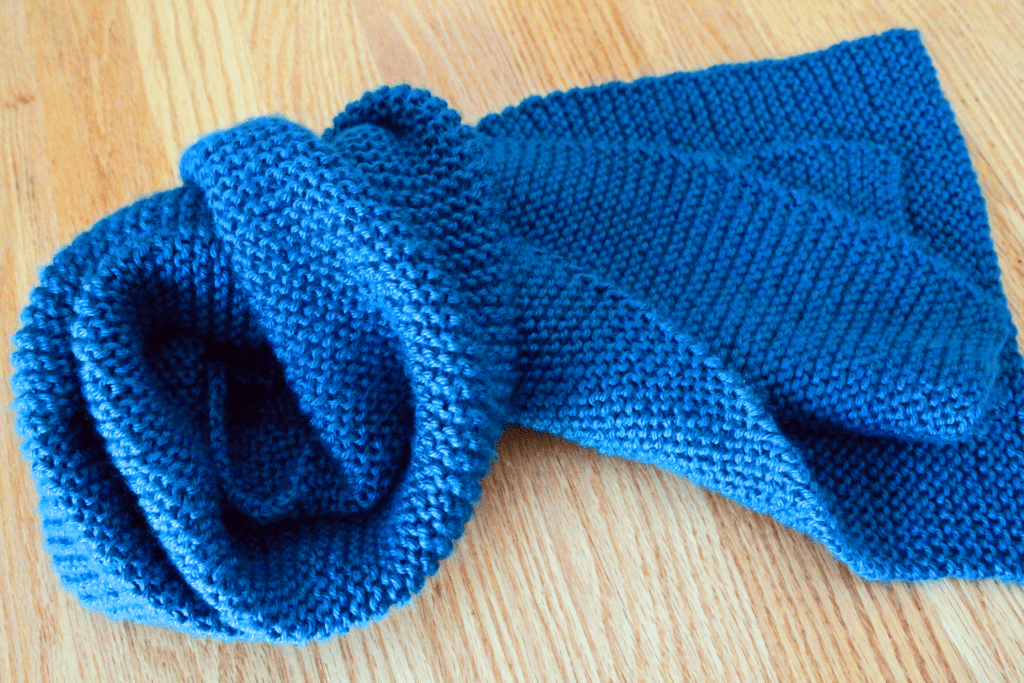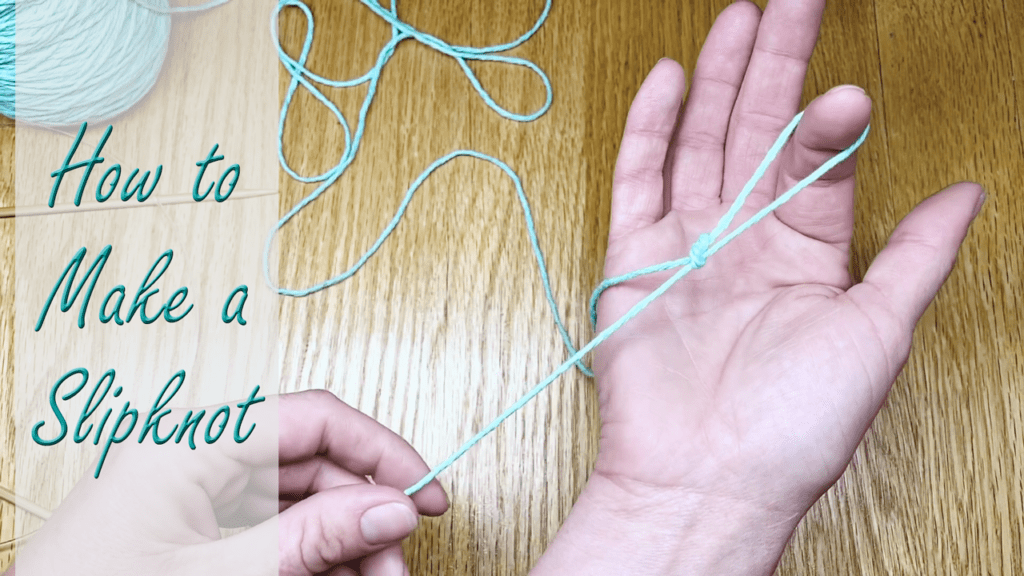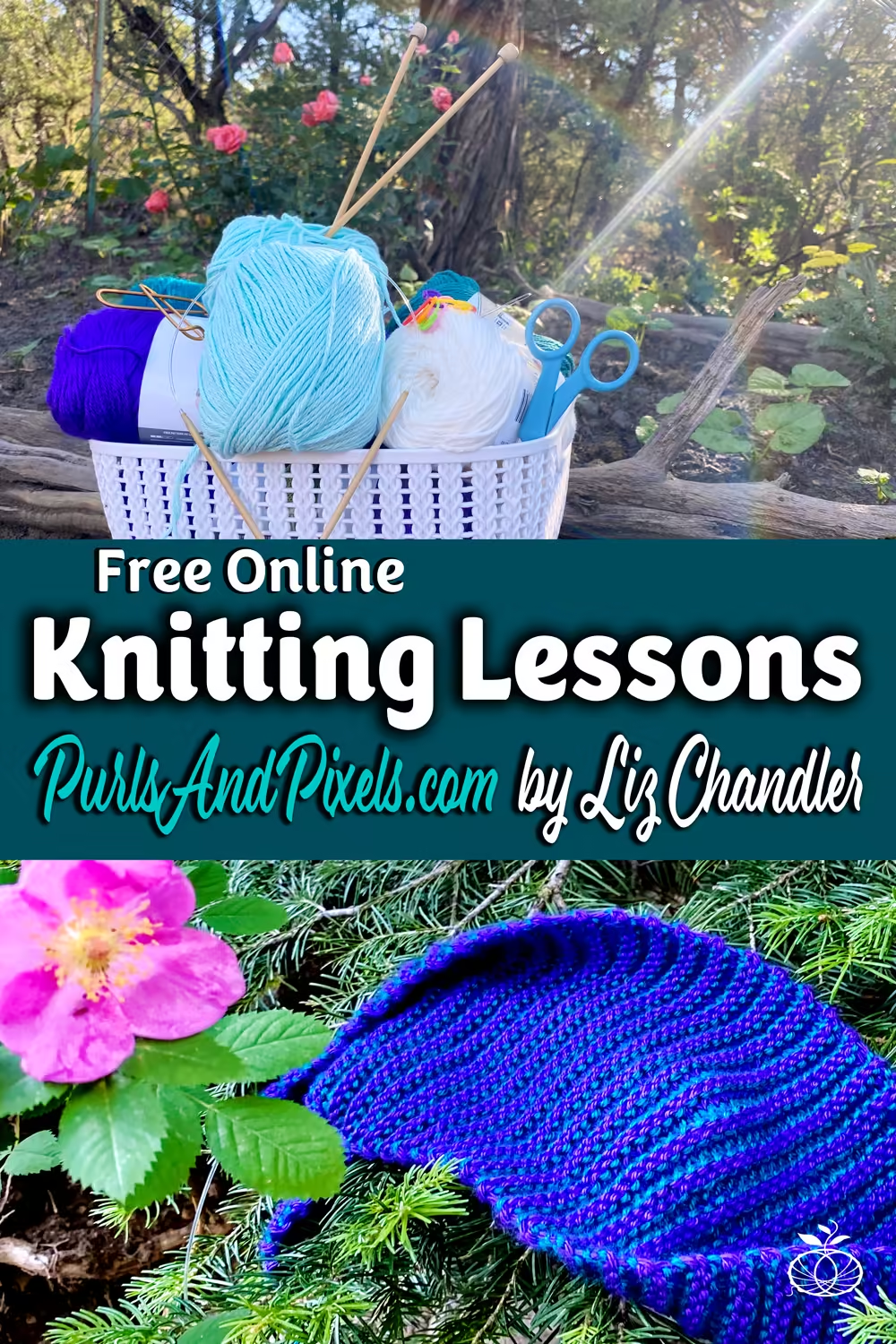As its name implies, the knit stitch is the foundation of knitting. Here, you will learn to make a knit stitch with this simple beginner’s knitting lesson. Then, you’ll be able to make a variety of fun projects: washcloths, scarves, blankets and more!

Once you have cast on your first stitches, you will be ready to begin your first knit stitch row.
The abbreviations “k” or “K” are often used in patterns to instruct you to make the knit stitch.
Two important things to remember when making the knit stitch:
- Hold the working yarn behind your needles, and
- Insert your right needle into each stitch from front to back.
There are different styles of knitting, the most common of which are Continental and English style knitting. Both styles of knitting give you the same knitted piece at the end, but they differ in how you hold your yarn. Here, you’ll learn how to knit in the Continental style. I like Continental style knitting because it is quicker to make the knit stitch once you have practiced. Read more about Continental Style Knitting.
Below are both video and written tutorials to help you learn how to make the knit stitch.
Video Guide: How to Make the Knit Stitch
Written Guide: How to Make the Knit Stitch
Knit, Step 1:
After turning your work, arrange the working yarn onto your left hand in your preferred yarn hold. Hold the empty needle in your right hand.

Knit, Step 3:
Insert the tip of your right-hand needle into the front loop of the first stitch on your left needle.

Knit, Step 4:
Bring the right needle tip over the working yarn and begin to form a counterclockwise loop around it.

Knit, Step 6:
Slide the stitch you have just worked into off your left needle, allowing the new stitch to remain on your right needle. You have made your first knit stitch!

Repeat steps one through six to knit an entire row off your left needle and onto the right. When the left needle is empty, you can turn your work again and start the next row.
This pattern, of using only knit stitches and turning after each row, is known as the Garter Stitch. It is used in many knitted projects.

Practice With My Free Knitting Patterns

Knit along with me and practice your knit stitches with my Free Beginner Face Scrubby Pattern.

If you are looking for a bigger project, my Free Beginner Knit Scarf Pattern is also made in garter stitch (all knit stitches). It is just as simple as my face scrubby pattern; it just takes a bit longer to make.
Up Next
After mastering the knit stitch, you will be ready to learn the purl stitch and start adding texture and patterns to your knitting projects.

Or, skip ahead and learn to take your stitches off the knitting needles with a standard bind off.














































